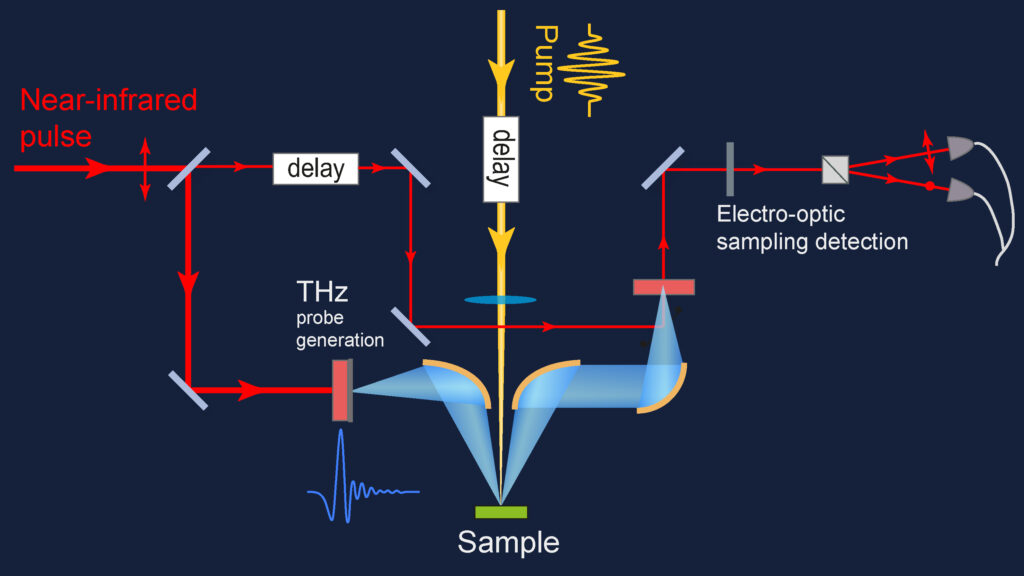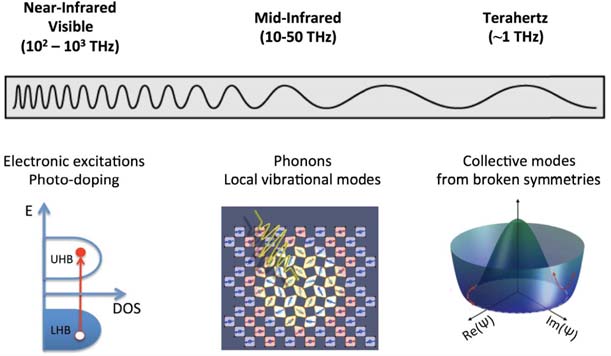Most fundamental excitations in condensed matter lay in the terahertz (THz) spectral range. These range from lattice vibrations to collective modes of superconducting condensates, charge density waves, and magnetically ordered states. In our laboratories we have specialized in designing and building time-resolved THz spectroscopy setups for investigating these excitations in and out of equilibrium. The THz pulses are produced with different methods depending on the required spectral characteristics, including optical rectification in nonlinear crystals and generation via photoconductive emitters. After reflection (or transmission) from the sample, the THz electric field is measured by electro-optic sampling. This technique makes it possible to extract real and imaginary parts of all optical response functions for a complete characterization of the material throughout the photoinduced dynamics.

Reviews
Nonlinear light–matter interaction at terahertz frequencies
D. Nicoletti and A. Cavalleri
Advances in Optics and Photonics, 8, 401-464 (2016)
Abstract
Strong optical pulses at mid-infrared and terahertz frequencies have recently emerged as powerful tools to manipulate and control the solid state and especially complex condensed matter systems with strongly correlated electrons. The recent developments in high-power sources in the 0.1–30 THz frequency range, both from table-top laser systems and from free-electron lasers, have provided access to excitations of molecules and solids, which can be stimulated at their resonance frequencies. Amongst these, we discuss free electrons in metals, superconducting gaps and Josephson plasmons in layered superconductors, and vibrational modes of the crystal lattice (phonons), as well as magnetic excitations. This review provides an overview and illustrative examples of how intense terahertz transients can be used to resonantly control matter, with particular focus on strongly correlated electron systems and high-temperature superconductors.


